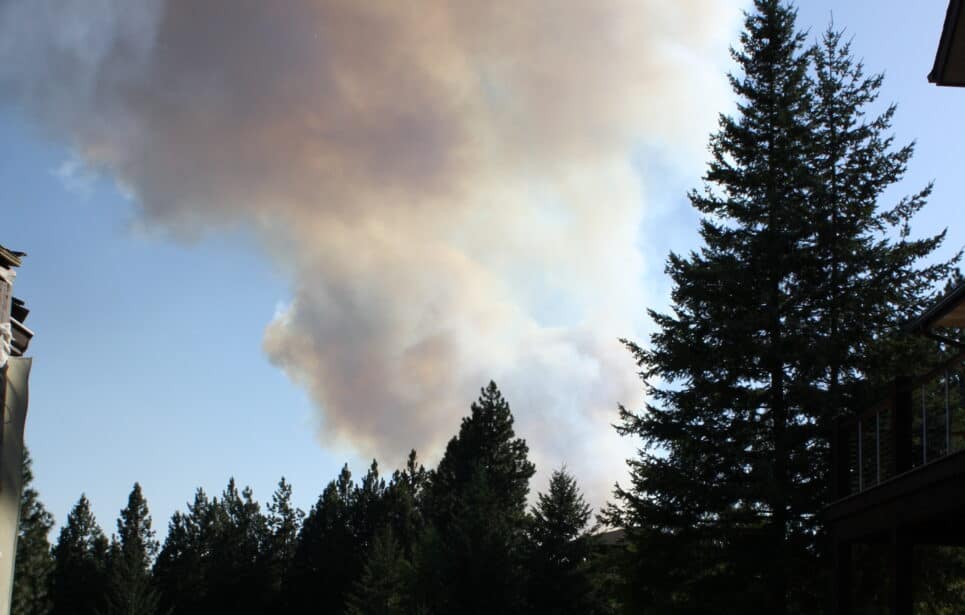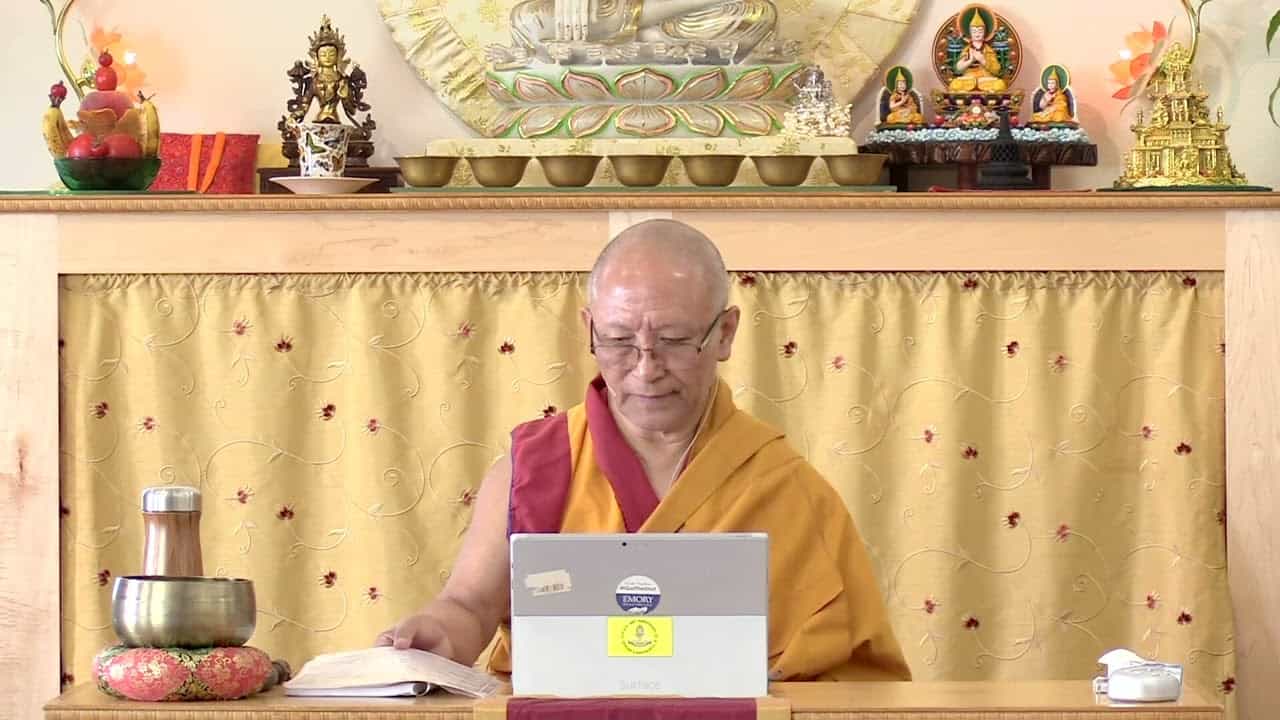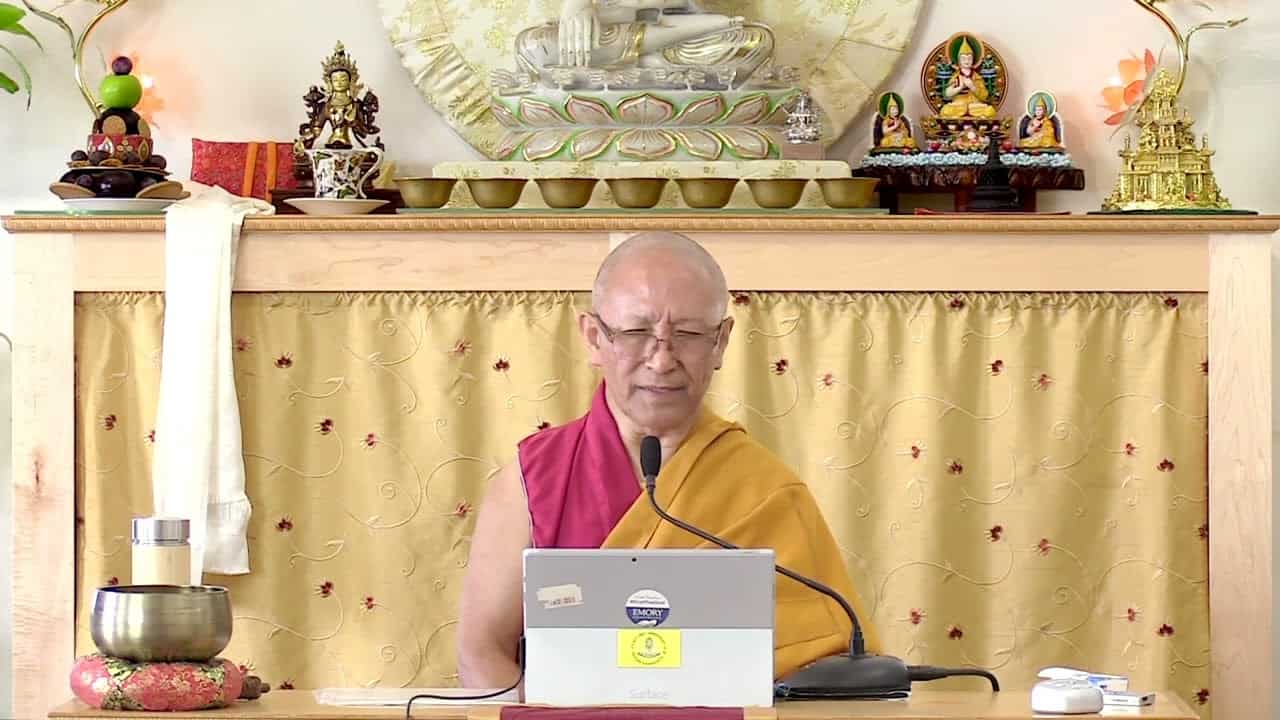A teaching on impermanence

Mary Grace was a teacher at a Jewish School in Seattle. She was at the Abbey when we noticed the huge clouds of smoke coming our way, and wrote the following article to share her experience with her colleagues at the school.
I travel to Sravasti Abbey in Newport, Washington, several times a year. Sravasti Abbey is an American Buddhist monastic community where nuns, monks, and lay students learn, practice, study, go on retreats, offer service, and strive to maintain a harmonious community. There is nothing like it. It is an amazing place.
On Friday afternoon, August 18th, the day of the scheduled retreat. I was in the large commercial kitchen making chocolate chip cookies. I stepped out onto the shaded deck facing west. Earlier in the day, wind gusts were blowing up to 25 mph. It was hot and dry. Looking out over the property, several of us saw smoke billowing behind some structures. At first, I thought it was a cloud, but I soon heard the call to 911 and knew that it was a wildfire. Wildfires proliferate in drought conditions with abundant flammable fuel, such as dried-out grasses and trees. We knew it was a possibility, and now it was the reality.
The monastics sprung into calm and focused action. Those on the fire emergency team followed protocols precisely, while others recited prayers, maintained calm, and waited for the next steps. Within the hour, we were packed and ready to evacuate. The county Sheriff drove up and informed us that it was time to go. We all loaded into cars and drove down the road about eighteen miles into Newport. Calls were made, and within moments the packed cars left for homes or hotels in Spokane, Washington, and Coeur d’Alene, Idaho.
I had the good fortune to share one of the last hotel rooms in downtown Spokane with two other retreatants. Little did we know that another community west of Spokane was also evacuated due to a large fire that jumped the Interstate Highway. Now, in less than 24 hours, there were four fires in the area requiring evacuation. The reality hit. I was in the middle of a climate emergency. Not only were there wildfires, but as a result of all the smoke, the air quality jumped from 25 to 495 in less than a day.
Wildfires are a stark reminder of the truth of impermanence as they transform landscapes in a matter of hours, erasing what was once familiar and creating hazardous conditions for breathing. The devastation caused by wildfires underscores the temporary nature of even seemingly stable environments. Wildfires are a teaching. When faced with its destruction, we confront the impermanence of nature, clean air, possessions, buildings, loved ones, animals, people, and the environment. This reminder wakes us up to reassess what truly matters. The sudden and often devastating impact of wildfires can lead to loss, displacement, and a sense of instability. These events can prompt individuals and communities to reflect on the transient nature of life and the importance of adapting to change.
From what I understand, the High Jewish holidays are a teaching on impermanence, and the central prayer for Rosh Hashanah (Jewish New Year) is a blunt reminder of the passing nature of our lives. Yom Kippur (the Day of Atonement) confronts us with the impermanence of all things with the Kol Nidre (a prayer said on the eve of Yom Kippur), and Sukkot (a holiday recalling the 40 years after the exodus when the Jews wandered in the desert) reminds us that everything in life is fleeting and impermanent. The truth of impermanence is embedded in Judaism.
Conditions all around us and inside of us are constantly changing. Reality has always been this way. We are simply coming to see things as they are. What would it mean to really know this truth? Would we cling less, consume less, and loosen the grip on desired outcomes? Or will we continue to need “fire under our feet” to realize this truth of impermanence?
I don’t know. But these are times to look at this truth. By embracing impermanence, cultivating compassion and acknowledging the cycles of renewal and destruction may we find solace, resilience, and a sense of purpose even in the wake of devastating natural disasters.
Nothing is permanent except change.
Mary Grace Lentz
Mary Grace Lentz is a dedicated Sravasti Abbey supporter and Dharma practitioner based in Seattle, Washington. She educates children, supports the unhoused, nurtures her granddaughter’s growth, and strives to be kind-hearted, approaching life with humility and a touch of humor.


